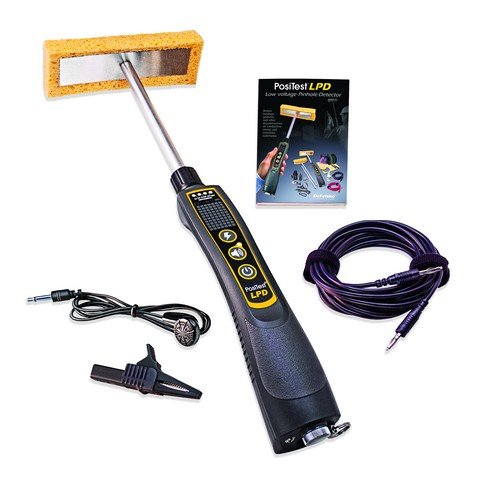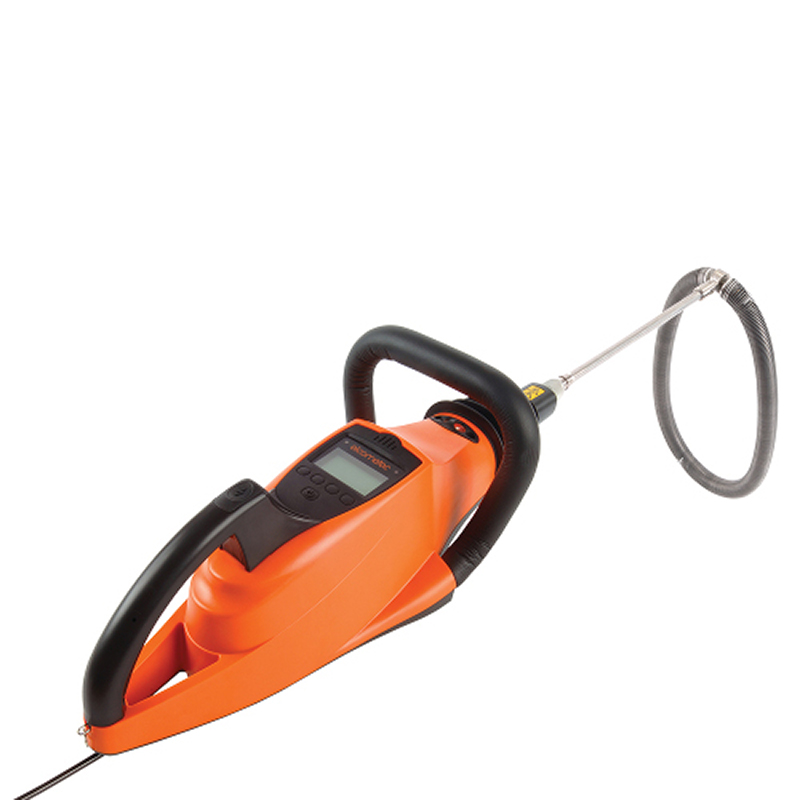Holiday Detector Instruments Buying Guide
Pinhole detection instruments measure the coating for defects on steel surfaces and can prevent premature coating failure.
 My Account
My Account
Pinhole detection instruments measure the coating for defects on steel surfaces and can prevent premature coating failure.
| Available For Rent | Best Scenarios | Benefits | Disadvantages | ||||
|---|---|---|---|---|---|---|---|
 |
DEFELSKO® HIGH VOLTAGE HOLIDAY DETECTOR |
|
|
|
|
||
 |
DEFELSKO® POSITEST LPD LOW VOLTAGE PINHOLE DETECTOR, BASIC KIT |
|
|
|
|
||
 |
DEFELSKO® POSITEST LPD LOW VOLTAGE PINHOLE DETECTOR, COMPLETE KIT |
|
|
|
|
||
 |
BLASTONE DC HOLIDAY DETECTOR 20KV W/ HIGH VOLTAGE HANDLE |
|
|
|
|
||
 |
ELCOMETER® 266 DC HOLIDAY DETECTOR, CERTIFIED |
|
|
|
|||
 |
ELCOMETER® 280 PULSED DC HOLIDAY DETECTOR INSPECTION KIT |
|
|
|
|
 |
 |
 |
 |
 |
 |
|
|---|---|---|---|---|---|---|
| DEFELSKO® HIGH VOLTAGE HOLIDAY DETECTOR | DEFELSKO® POSITEST LPD LOW VOLTAGE PINHOLE DETECTOR, BASIC KIT | DEFELSKO® POSITEST LPD LOW VOLTAGE PINHOLE DETECTOR, COMPLETE KIT | BLASTONE DC HOLIDAY DETECTOR 20KV INCLUDING HIGH VOLTAGE HANDLE | ELCOMETER® 266 DC HOLIDAY DETECTOR, CERTIFIED | ELCOMETER® 280 PULSED DC HOLIDAY DETECTOR INSPECTION KIT | |
| Available For Rent |
|
|
|
|
|
|
| Best Scenarios |
|
|
|
|
|
|
| Benefits |
|
|
|
|
|
|
| Disadvantages |
|
|
|
|
||
Recently we had a customer who was unsure if the holiday detection equipment they had on site would work for their project. This is an important consideration, because if you use a high voltage detector on a thin coating, you will destroy it. And if you use a low voltage on a high-build coating, you won’t get the correct results.
First off, what’s a HOLIDAY?
Holidays are tiny pinhole-sized exposures in the coating. They often form from solvent entrapment. When coating bubbles burst they expose the steel. They may be small, but they create a corrosion cell, which will compromise the integrity of the coating system and become the cause of premature coating failure.
A Holiday Detector uses electricity grounded through to the underlying steel substrate. You run the tool over the coated surface and it will find where these little pinholes are hiding by completing the electric circuit and sounding an alarm.
So here are 5 rules of thumb to help you on your projects.
And finally… a note on safety
A pinhole detector checks coatings by means of electrical voltage. Microscopically small defects (>20µm) can be detected in the coating of a surface by using a holiday (pinhole) detector. These defects in surface coatings can have extremely large consequences for coating life. The more aggressive the environment the higher the risk that a pinhole will initiate corrosion.
The other application for pinhole detection is where the contents of a vessel or pipeline need protection from coming in contact with the material the vessel / pipeline is manufactured from e.g. food processing plant. They are operated by moving a conductive probe over the surface of a cured coating. These probes can take a variety of forms brass brush, rolling spring, wet sponge.
By and large the most frequent source of information for the voltage is the coating manufacturer. It is important to follow these accurately – too high a voltage and you can damage the coating, too low a voltage and you can miss substandard areas. Sometimes a facility owner or third party inspector can also specify voltage settings. A third source of voltage setting specifications is coating inspection standards. Many of these will detail recommended voltage settings.
Low voltage operate from 9 to 90 volts. High voltage units operate from 0.5 to 35 kilovolts.
Earlier designs of pinhole detection required regular checking with a separate crest meter to check for voltage output. The current design has a crest meter built in that displays and controls the voltage at the electrode.
For high voltage use, the most commonly used is a flat wire brush, also available are: rolling springs for pipe exteriors, fan brushes for hard to reach areas and conductive rubber probes to prevent scratches. Low voltage detectors use a wet sponge. These are available in rectangular and round pads and rollers (similar to paint rollers). Sponge sheets are also available to cut your own custom shapes.
Registration is required to create a Quote.
Click Here to Login or Register.